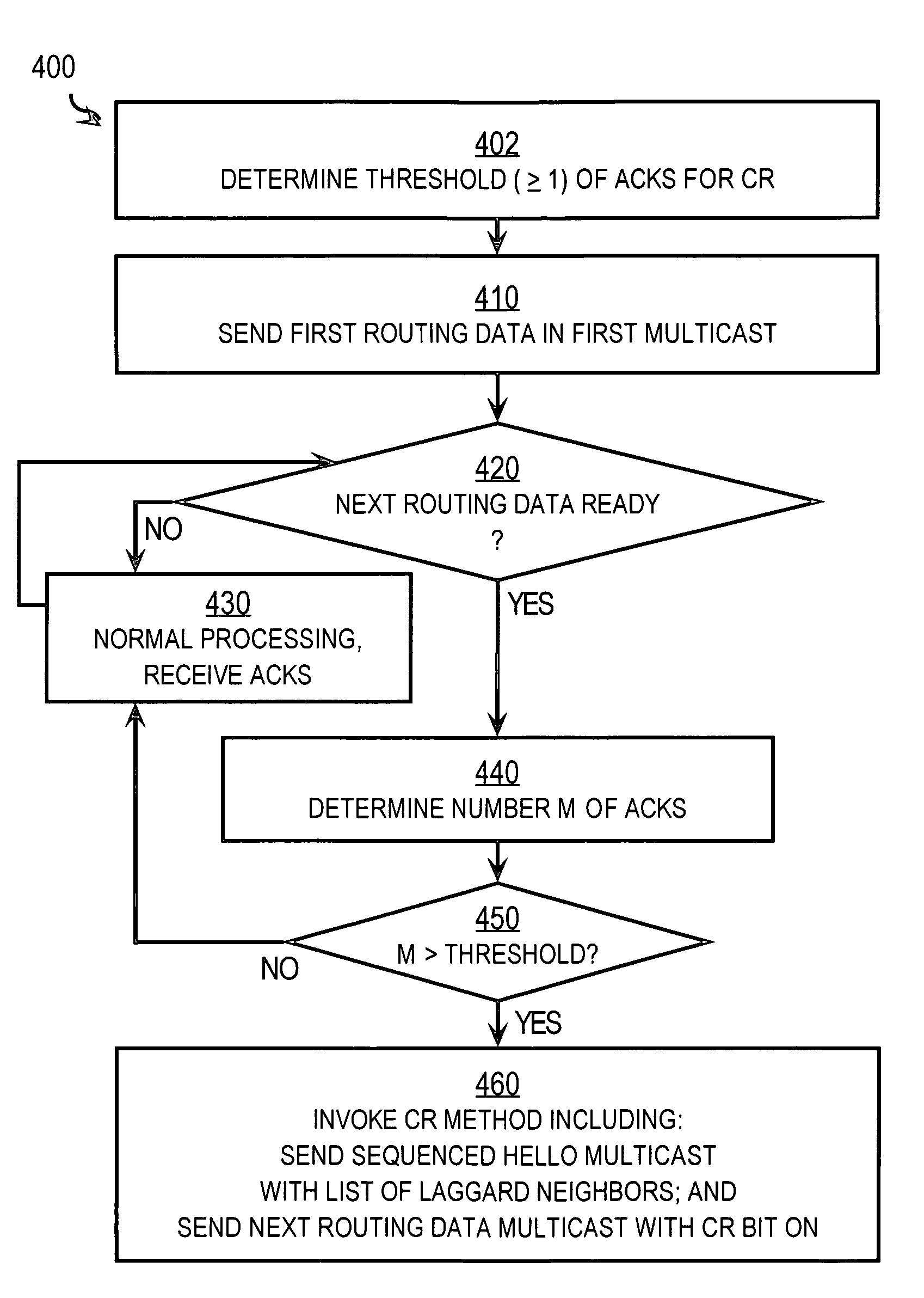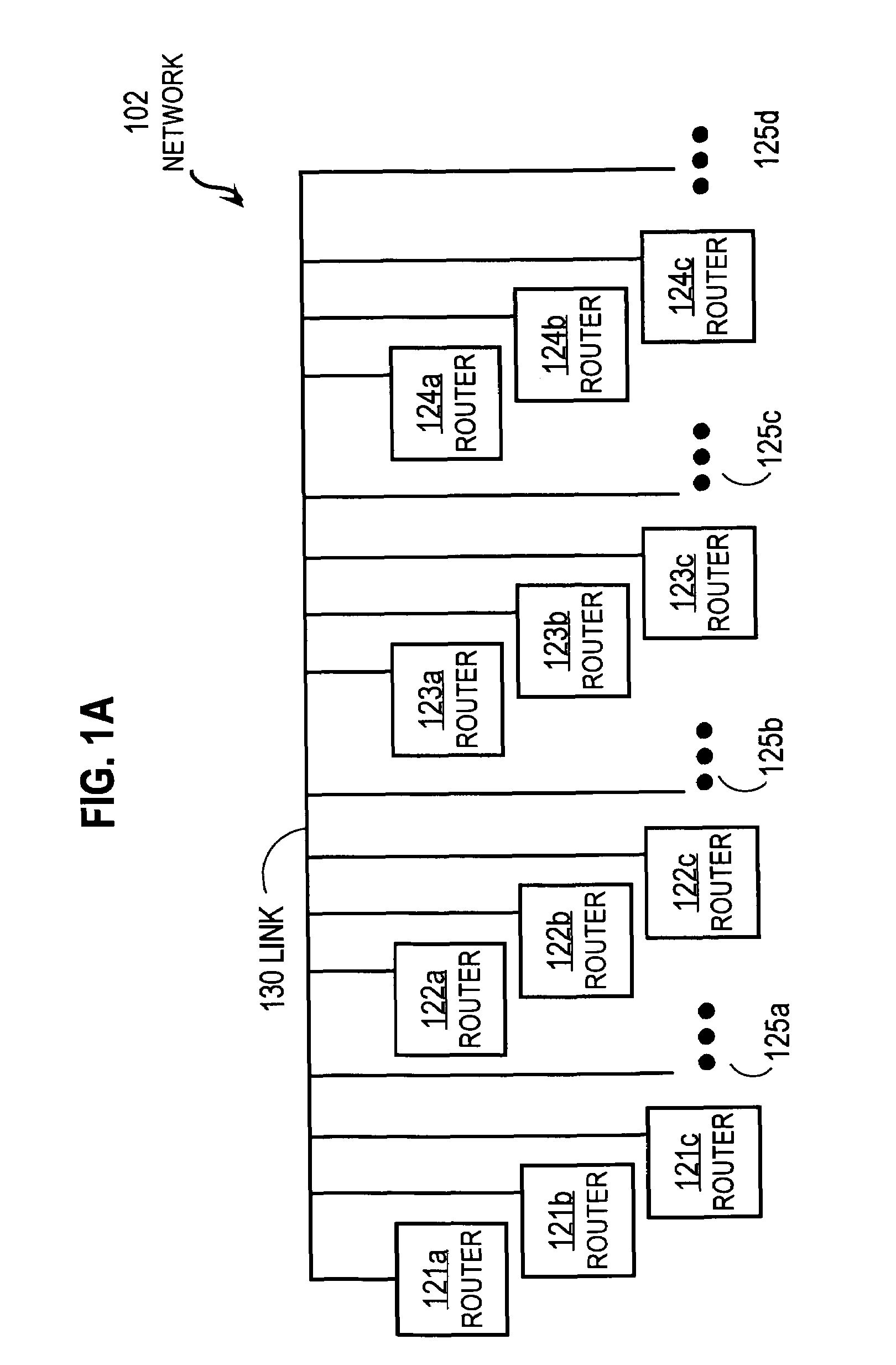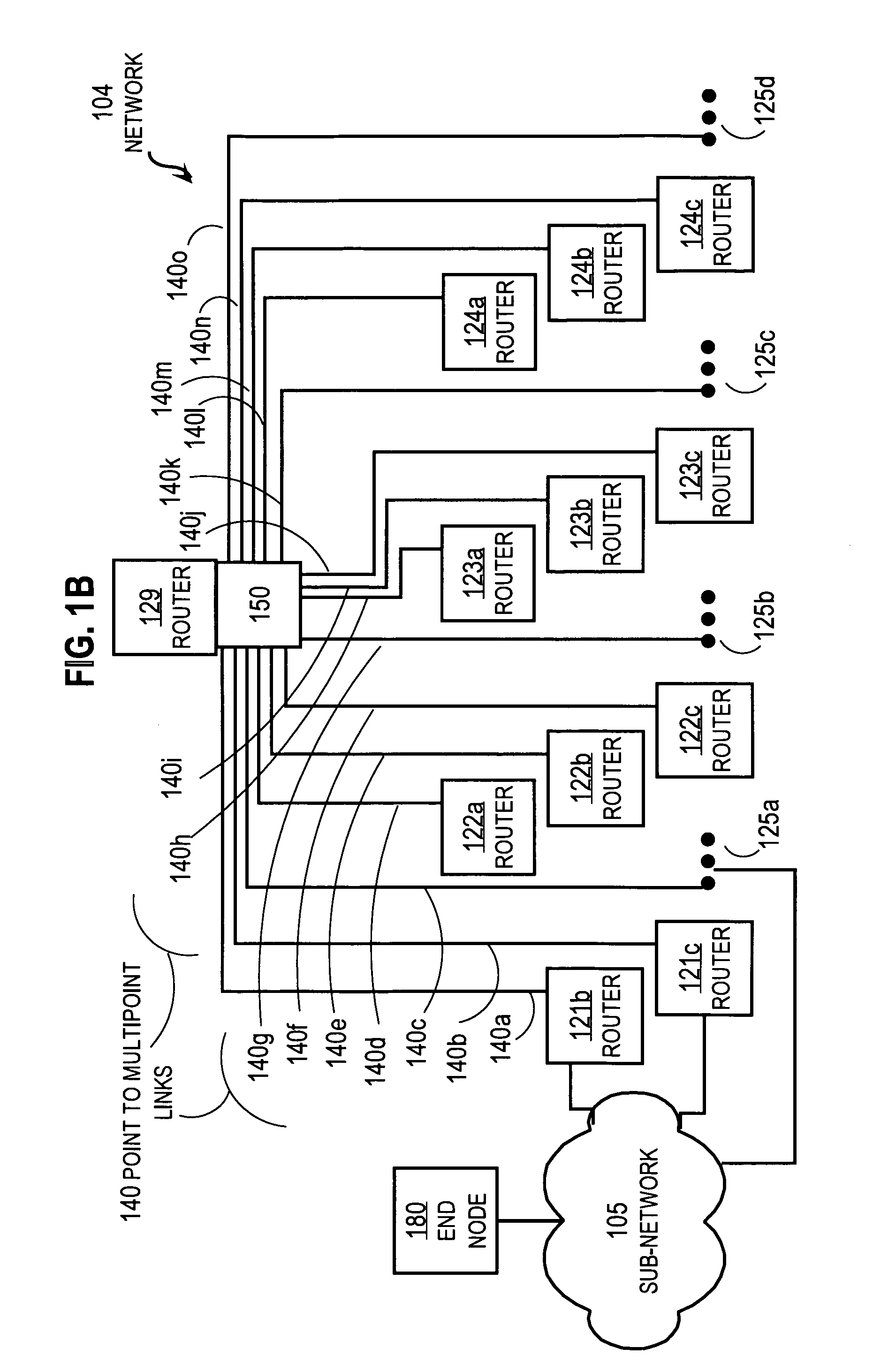Techniques for distributing routing information using multicasts
a routing information and multicast technology, applied in the field of multicasts, can solve the problems of increasing the number of laggard routers, not being efficient, and not being able to single-cast the same routing information to many of them, so as to reduce the congestion on the link
- Summary
- Abstract
- Description
- Claims
- Application Information
AI Technical Summary
Benefits of technology
Problems solved by technology
Method used
Image
Examples
Embodiment Construction
[0033]Techniques are described for sending data among multiple neighbors in a packet-switched communications network. In the following description, for the purposes of explanation, numerous specific details are set forth in order to provide a thorough understanding of the present invention. It will be apparent, however, to one skilled in the art that the present invention may be practiced without these specific details. In other instances, well-known structures and devices are shown in block diagram form in order to avoid unnecessarily obscuring the present invention.
[0034]In the following description, embodiments of the invention are described in the context of sending routing information for EIGRP within an autonomous system using a conditional receive (CR) mechanism to feed routing information to fast routers more rapidly than to slow routers. However, the invention is not limited to this context and protocol, but may be applied in any routing protocol that sends information to a...
PUM
 Login to View More
Login to View More Abstract
Description
Claims
Application Information
 Login to View More
Login to View More - R&D
- Intellectual Property
- Life Sciences
- Materials
- Tech Scout
- Unparalleled Data Quality
- Higher Quality Content
- 60% Fewer Hallucinations
Browse by: Latest US Patents, China's latest patents, Technical Efficacy Thesaurus, Application Domain, Technology Topic, Popular Technical Reports.
© 2025 PatSnap. All rights reserved.Legal|Privacy policy|Modern Slavery Act Transparency Statement|Sitemap|About US| Contact US: help@patsnap.com



